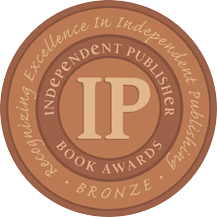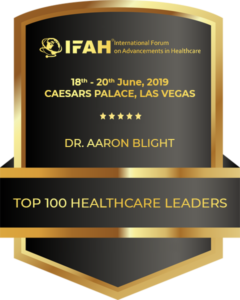Published on:

Caregiving consultant and healthcare speaker Dr. Aaron Blight is happy to take the time to answer questions on Quora about caregiving organizational development, healthcare, senior care, and many other topics. In this post, we will examine some of his most recent answers dealing with the healthcare industry.
What condition would be severe enough for a patient to require professional home healthcare 24 hours a day?
Dr. Aaron Blight:
Your question asks about not only the type of care but also the frequency of care for a loved one. This is a question that really requires a case-by-case assessment of conditions and circumstances.
The reason it’s a case-by-case answer is because caregiving tasks are always dictated by the dependencies of the care recipient. Those who provide care must address the care recipient’s unique conditions on an individual basis.
Care recipient needs have a long history of classification through the modern world of hospitals, nursing homes, and long-term care. The established view of care recipient dependencies is based upon a distinction between activities of daily living (ADLs), instrumental activities of daily living (IADLs), and other needs.
Caregiving tasks align across these differing spheres of dependency.
Activities of daily living (ADLs) are a standard list of personal activities that an individual is presumed to be able to do independently: toileting, transferring, dressing, bathing, managing continence, and feeding.
Over 50 years ago, these activities were indexed to create a uniform measurement tool of the needs of the aged population (Katz, Ford, Moskowitz, Jackson, & Jaffe, 1963). This Index of ADL was based upon an eight-year study of the dependencies of 1,001 elderly people, and it has been the foundation of much research on care dependencies and corresponding caregiving tasks since publication.
Instrumental activities of daily living (IADLs) were similarly classified in recognition of the fact that older persons commonly need help with activities in addition to ADLs. Instrumental activities of daily living include managing finances, doing housework, communicating with other people, taking medications, preparing meals, transportation, etc.
Typically within the long-term care system, when a person requires assistance with two or more ADLs, he or she is eligible for nursing home placement.
The same standard of eligibility for nursing home placement is often used by third party payers – such as long term care insurers – to also determine eligibility for reimbursable home care assistance.
Having said that, someone who needs help with 2 ADLs doesn’t necessarily need professional home healthcare 24 hours per day, 7 days per week.
In addition to looking at ADLs and IADLs, here are a few discussion points to evaluate how much professional assistance you might secure for your loved one:
• What does your loved one actually want in terms of help?
• When at home, how safe is your loved one?
• How do medical conditions and treatments factor into the situation?
• What kind of informal support is currently offered from family and friends?
• What kind of informal support could be available from family and friends?
• Do your loved one’s needs follow a regular pattern? For example, is more help needed during night time?
• Can modifications be made to the home environment to make it more suitable for your loved one’s changing conditions?
• How receptive is your loved one to the idea of an outsider coming into their home to offer assistance?
• As you evaluate needs – and include your loved one in the conversation – you will be able to develop a plan that balances not only safety and welfare but also dignity and independence.
How do you get a good job in Sr. Mgmt again (back in the larger market) after being out of the career for several years, caregiving for my aged parent in a small community?
Dr. Aaron Blight:
First, kudos to you for the sacrifice you have made on behalf of your parent. Your offering of self to your loved is a reflection of your character, values, and commitment to the people who matter most.
You’ve probably discovered that job hunting is dramatically different from what it used to be, thanks to the digital transformation of everything. For someone who has been out of the workforce for years, this can be overwhelming.
When you were in senior management several years ago, you knew that the best way to find a job was through networking. Remember that? Networking is when you actually talk to real human beings, and they tell you of job opportunities and maybe even help connect you with one.
It’s the same today.
The best way to find a job is still through networking, except today there are new ways to network.
The good news is that behind all of that digital stuff there are real human beings!
The internet makes it possible for you to expand your network online, using the many social media platforms that are available. As a person who has been in senior management, you may want to start an online networking effort through LinkedIn. Here are some reasons why:
• Linkedin by the Numbers (2019): Stats, Demographics & Fun Facts
There are many human beings on LinkedIn who are in positions to help you return to the workforce.
Start by reaching out to people you know – friends and former colleagues – explain that you’re getting “back in the saddle” and would appreciate any help they can offer in finding a job. Connect with those people on LinkedIn. Ask them if they can refer you to someone they know in your field, and then you can also ask to connect with that newly referred contact via LinkedIn.
Here are a few suggestions for connecting on LinkedIn with someone you don’t know:
• include a personalized message when you ask to connect – explain what prompted your request.
• if the person accepts your request, say thank you and comment on something you learned about them from their profile.
• ask if the person would have a few minutes for a phone call.
• prepare for that phone call.
• make sure to follow up, as appropriate, after the phone call. Your follow-up might lead to an eventual face-to-face meeting.
If you get to that face-to-face meeting with a real human being who happens to be a decision maker, then you have penetrated the digital veil and given yourself a huge advantage in being “top of mind” when that decision maker needs to hire someone. Alternatively, that decision maker could actually refer you to another human being who is hiring – now.
Your future employer should look upon the years you spent caregiving as an indication of your dependability, loyalty, and strength of character. If you meet a prospective employer who dismisses or scoffs at the portion of your life that you devoted to the one who gave you life, then you probably wouldn’t want to work for them anyway.
You still have the qualities that made you a senior manager before you assumed full-time caregiving responsibilities. Management skills are in huge demand today. You may not be up on the latest technology, but you can learn all of that stuff. As you focus on what you have to offer and authentically acknowledge your caregiving sacrifices, real human beings will be impressed and want to hire you.
What’s the hardest part about getting older that no one ever talks about at all?
Dr. Aaron Blight:
Your question made me think of this statement from Dr. Mary Pipher:
“When people are in their thirties, they worry about losing their looks. In their fifties, they worry about losing capacities. By their seventies, people worry about losing everything – control, relationships, and their very lives.” (Quote from Pipher’s book, Another Country, p. 159.)
Aging is a series of losses. Personally, I think the hardest parts of getting older are found in the losses that people don’t want to talk about.
Loss of looks, loss of physical senses, loss of bodily control, loss of functional independence, loss of friends and family, loss of memory, loss of financial security, loss of purpose, loss of hope, loss of self – all of these can potentially creep into the lifelong passage we call aging.
Some of these losses are easier to discuss than others. In addition, what one person may find easy to discuss can be an especially challenging topic for someone else.
Cultural narratives about getting older often focus on the losses and rarely examine the gains.
But a lot can be gained in getting older. If you really think about it, many of the gains stand opposite the losses mentioned above.
Gain of independence, gain of friends and family, gain of memories, gain of financial security, gain of purpose, gain of hope, gain of self. I’d add gain of wisdom, gain of perspective, gain of appreciation of the present.
We all benefit from open and honest discussions about getting older – the reality of aging reaches every one of us – and it’s helpful to acknowledge the bad as well as the good.
That’s all for this edition. Check back in over the coming weeks and months for more Q&A with Dr. Aaron Blight!
Posted in Eldercare, Healthcare




